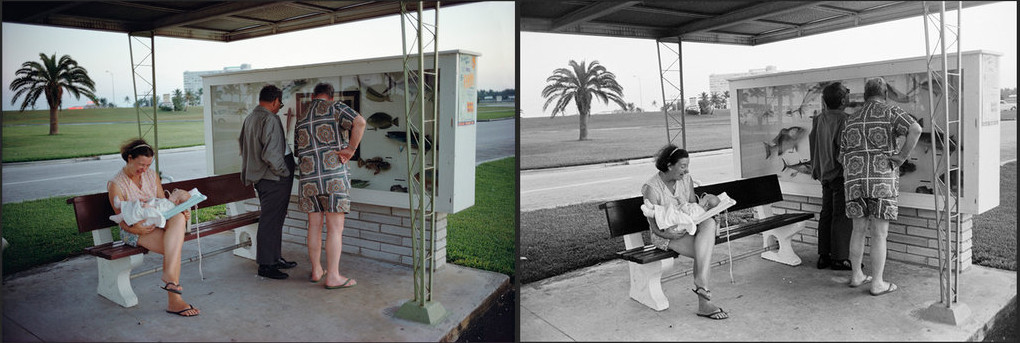
Joel Meyerowitz - in black and white and full colour
Witness the moment when the pioneering American photographer began depicting his world in two ways
For a while, during the late 1960s, the US photographer Joel Meyerowitz carried two cameras: one loaded with monochrome stock, the other with colour. Just how, when and why US fine-art photographers switched from black-and-white image-making, which was prized within the gallery system, to colour photography, once seen as the preserve of the holiday snapper, has been the cause of much debate.
Meyerowitz was certainly a pioneer of full colour photography, as a new show at London’s Beetles + Huxley gallery, opening 23 May, makes clear. The show, entitled Joel Meyerowitz: Towards Colour 1962-1976, details Joel’s switch over, showing earlier black-and-white images alongside later colour works.
In the run-up to this show, we thought it would be a good time to share with you a few extracts from a beautiful section in our two-volume Meyerowitz retrospective, Taking My Time. Entitled a Question of Color, the chapter reproduces scenes Meyerowitz shot with both colour and black-and-white stock, side-by-side, accompanied by Joel’s own account of each photograph.

Chenonceaux, France, 1967 “My first response was to the oddly surreal figure wearing a raincoat on a sunny day, standing on the wall overlooking the garden,” Joel recalls. “His scale, and his stillness at that moment in relation to the whole space, was the signal to bring the Leica to my eye; first the color camera, then the black and white one. I made both frames in quick succession, with only his head and shoulders turning to differentiate one from the other. He then moved on. I remember feeling that the image with his back flat to the camera was the more compelling moment, that he was more of a mystery there with his face only an edge showing a small tip of a nose, reminding me of a Magritte-like figure.”

Florida, USA, 1967 “This photograph tells its joke well in either black and white or color," Joel says, "particularly the double good fortune of the belly and the blimp, and then the ring-toss post and its place in the man’s shadow. But I feel the color image presents the whole place more fully. I read the sad conditions of the place through the spent green of the deck in sunlight seen against the similar value blue of the sky – as opposed to the near - equivalent grays in the black and white image. When I look at all the flat grays of the black and white print it all becomes duller to me, joke or not. I need to see the color of his shorts, that belly, the silver of the blimp, the color of the air and water, the tracery of the shadows on that pinkish tan wall. I hunger for the information that color holds!”

The Bronx, New York, USA, 1967 “Once again it is the sense of dimension that color description brings with it that pleases me here," says Joel. "There is a fullness that, in spite of the flatness of the light, tells me so much: the delicate yellow in the center of her bouquet, the pale patch of his skin showing above his sock, the pink leg just sneaking in on the bottom of the frame on the left, and the pink bridesmaid on the right edge. And finally, and perhaps most importantly, the small tree between the man and the bride, its slow luster even on a brooding day, gives me pleasure. And the chance to move back and forth between the nominal subject of the photograph – the juxtaposition of the bride and the man – and return to the tree as if the whole play was reversed and the photograph was about the tree and, coincidentally, these other two happened to be there.”
To see these images and many others in all their glory and to secure a beautiful limited edition signed print, Fallen Man, Paris 1967, order a copy of Joel's book Taking My Time here.